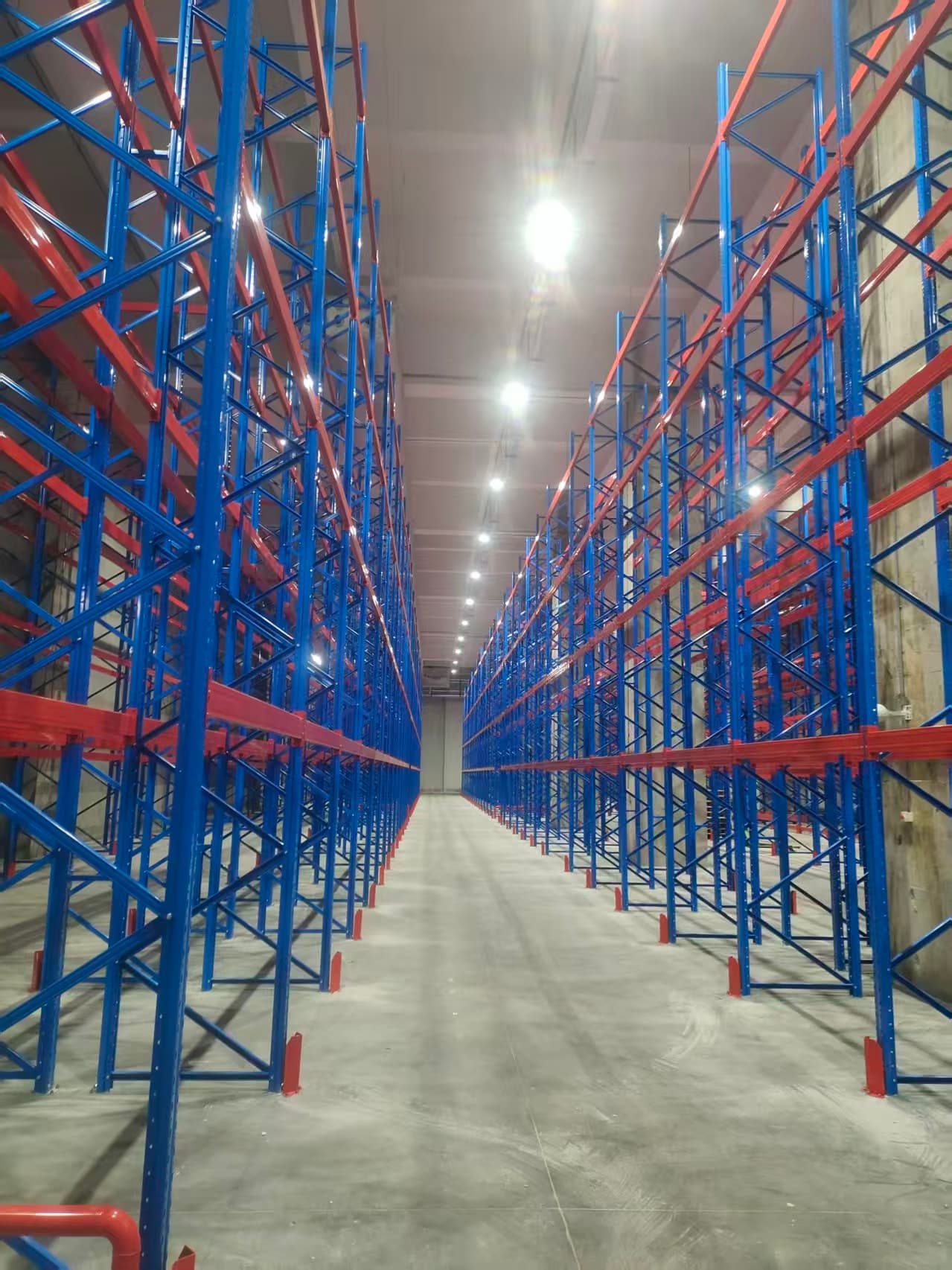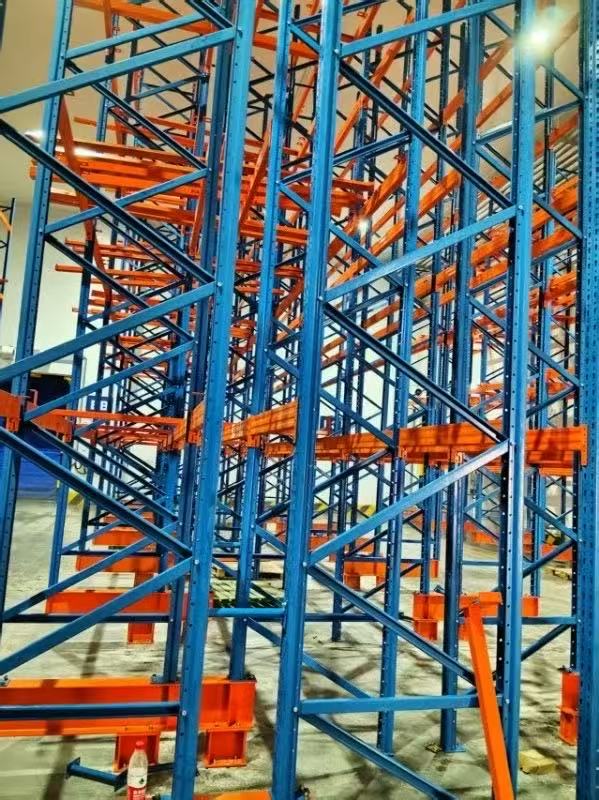In the relentless pursuit of warehouse efficiency, every second and every square foot counts. While traditional static shelving and selective pallet racks have their place, a more dynamic solution is often needed for high-volume, fast-moving goods. Enter gravity feed pallet racking, a system that harnesses the simple power of gravity to revolutionize inventory management. If you're looking to streamline your operations, this deep dive into gravity feed pallet racking will reveal why it might be the upgrade your facility needs.

At its heart, gravity feed pallet racking is a high-density, dynamic storage system. Unlike conventional racks where pallets sit statically on beams, this system uses inclined roller or wheel tracks. Pallets are loaded at the higher, "back" end of the rack and then glide smoothly down the slight incline towards the lower, "front" pick face. This creates a continuous flow of inventory, ensuring that the oldest stock (following the FIFO - First-In, First-Out principle) is always available for picking at the front.
Think of it as a sliding puzzle for your warehouse. As a worker removes a pallet from the front, the entire line of pallets behind it automatically advances one position, ready for the next pick. This automated flow is the defining characteristic of gravity feed pallet racking, eliminating the need for forklifts to navigate deep into the racking to access specific pallets.
Understanding the mechanics is crucial to appreciating its efficiency. A typical gravity feed pallet racking system consists of several key components:
Inclined Rails or Tracks: The system is built on a series of inclined rails, typically set at a 3-5% grade. These rails are equipped with either rollers (for heavier, uniform pallets) or wheels (for lighter loads).
Storage Lanes: Multiple tracks run parallel to form a single storage lane, which can be several pallets deep.
Loading and Unloading Zones: The rear of the system is the loading zone, where forklifts place new pallets. The front is the unloading or picking zone, where workers access the pallets.
Speed Controllers and Brakes: To prevent pallets from gaining excessive speed and crashing into the front, speed controllers (or brakes) are installed at strategic intervals along the tracks. These devices regulate the descent, ensuring a safe and controlled flow.
Entry and Exit Stops: Safety stops are placed at the front and rear to securely hold pallets in place until they are ready to be loaded or unloaded.
The entire process is a beautifully simple application of physics, creating a self-regulating, high-throughput storage environment.
The operational benefits of implementing a gravity feed pallet racking system are substantial and directly impact the bottom line.
Maximized Space Utilization: By utilizing depth instead of just width, this system offers a much higher storage density compared to traditional selective racking. It dramatically reduces aisle space, as forklifts only need to access the loading and unloading ends, not the sides.
Guaranteed FIFO Inventory Management: For industries dealing with perishable goods, or those with strict stock rotation policies (e.g., food, beverages, pharmaceuticals, chemicals), FIFO is non-negotiable. Gravity feed pallet racking enforces this principle by design, minimizing the risk of product spoilage and obsolescence.
Dramatically Increased Picking Efficiency: Picking faces are consolidated, and workers no longer need to travel or search for stock. The next pallet is always directly in front of them, ready to be picked. This leads to a significant reduction in labor costs and a dramatic increase in order fulfillment speed.
Enhanced Safety: Reducing forklift traffic within the racking aisles minimizes the risk of collisions and damage to both the racking and the inventory. The controlled descent of pallets also reduces the physical strain on workers compared to manually retrieving pallets from deep within a static rack.

Gravity feed pallet racking is not a one-size-fits-all solution, but it is exceptionally well-suited for specific scenarios:
High-Volume, Fast-Moving Goods (FMCG): Perfect for distribution centers handling a large number of SKUs with high turnover rates.
Perishable Products: The ideal solution for cold storage and freezer facilities where FIFO is critical to prevent waste. The reduced open aisle space also helps maintain a consistent temperature.
Cross-Docking Operations: Facilitates the rapid movement of goods from receiving to shipping.
Production Lines: Can be used to feed raw materials to the production floor in a controlled, sequential manner.
Beverage and Food Distribution: A classic application, ensuring stock rotation for items with expiration dates.
While powerful, gravity feed pallet racking requires careful planning. Here are key factors to consider:
Pallet Quality and Consistency: The system relies on pallets gliding smoothly. Damaged, irregular, or non-standard pallets can cause jams and disrupt the entire flow. Consistent pallet quality is a prerequisite.
Floor Flatness: The incline of the system is precise. An uneven warehouse floor can negatively impact the functionality and safety of the rack, often requiring professional site preparation.
Product Weight and Dimensions: The system must be engineered to handle the specific weight and size of your palletized loads. Overloading can damage the tracks and brakes.
Higher Initial Investment: The cost of a gravity feed pallet racking system is typically higher than that of traditional selective racking due to its specialized components. A thorough cost-benefit analysis is essential.
Specialized Design and Installation: This is not a DIY project. It requires expert design by structural engineers and installation by certified professionals to ensure safety and optimal performance.
How does gravity feed pallet racking stack up against alternatives?
vs. Drive-In/Drive-Through Racking: Both are high-density, but drive-in racking uses a Last-In, First-Out (LIFO) method and requires a forklift to enter the rack structure, which carries a higher risk of damage and is slower for picking.
vs. Push-Back Racking: Push-back racking also offers high density and is based on a LIFO principle. It's a great option where multiple SKUs are stored in a smaller footprint, but it doesn't provide the automated FIFO flow of a gravity feed pallet racking system.
vs. Mobile Pallet Racking: Mobile racking saves space by eliminating all but one aisle, but it is mechanically complex and can be slower to access specific pallets compared to the constant availability at the face of a gravity system.
The decision boils down to your specific operational needs. If your primary challenges involve maximizing storage density in a limited space, enforcing strict FIFO for a large volume of goods, and drastically improving picking efficiency for fast-moving items, then gravity feed pallet racking is an investment worth serious consideration. It transforms a static storage area into a dynamic, flowing pipeline, turning inventory management from a logistical challenge into a competitive advantage.
Q1: What is the main difference between gravity feed and selective pallet racking?
A1: The main difference lies in accessibility and inventory flow. Selective racking allows direct access to every pallet position but requires more aisle space and does not enforce stock rotation. Gravity feed pallet racking is a high-density system that uses a FIFO (First-In, First-Out) method, where pallets flow from the loading end to the picking end on inclined tracks, reducing aisle space and ensuring automatic stock rotation.
Q2: Can gravity feed pallet racking be used in cold storage or freezer environments?
A2: Absolutely. In fact, it is one of the most popular applications. The system's reduced open aisle space helps maintain a stable temperature, and its enforced FIFO principle is critical for managing perishable goods with expiration dates. Specialized components designed for low-temperature operation are used.
Q3: What happens if a pallet gets stuck or jams in the system?
A3: While well-designed systems with quality pallets minimize jams, they can occur. Most gravity feed pallet racking systems are designed with access points or "clean-out" zones to allow workers to safely clear a jammed pallet without disassembling the entire lane.
Q4: How deep (how many pallets deep) can a gravity feed lane be?
A4: The depth can vary significantly based on the load weight, pallet type, and the specific engineering of the system. Lanes can typically range from 5 to over 20 pallets deep. A professional racking engineer must determine the optimal depth for your specific application to ensure safety and functionality.
Q5: Is the initial cost of gravity feed racking justified?
A5: While the upfront cost is higher than traditional racking, the justification comes from the long-term operational savings. These savings are realized through drastically reduced labor costs for picking, minimized product loss due to spoilage (via FIFO), maximized storage capacity per square foot, and improved overall workflow efficiency. A detailed ROI analysis will typically show a strong justification for high-volume, FIFO-driven operations.
 Wechat
Wechat
 Whatsapp
Whatsapp